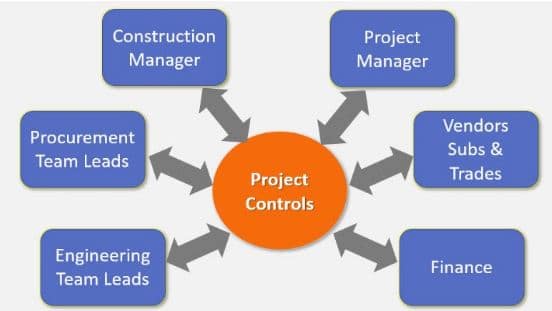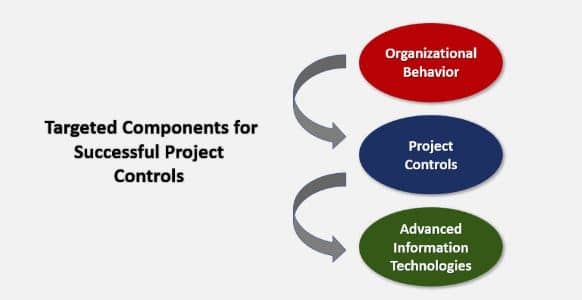Transforming Project Controls For Organizations, If Not Now, When?
Today’s Owner and EPC companies are frequently dealing with significant budget overruns and schedule delays, placing increased pressure to adopt project controls strategies, which better fit their company and the projects they execute.
In this post, Fred Wellman discusses strategies for rapidly transforming project controls for organizations in today’s construction industry.
“Another word for control is “direction”. Thus, control deals with the future.”
Current Challenges in Today’s Construction Industry
Increased Variety of Project Delivery Systems and Contracting Strategies
Capital Projects have grown in size and complexity over the past two decades. In addition, Owners are increasingly assigning more responsibilities to their contractors, necessitating contractors to take on more risk. To cope, there has been an increased variety of project delivery systems and contracting strategies, which have emerged in the construction industry.
Rapid Project Execution
The demand for rapid project execution has exploded. Today’s projects rarely have distinct, sequential project phases. There is a greater extent of overlap in design and construction, necessitating a need to start procurement and subcontracting processes and staff project teams earlier placing increased need for stakeholder alignment and continuous communication.
Virtual Team Members
Communications technology developments have led to virtual performers on project teams, which are underserved by a painfully slow adoption of digital, construction technology and often relying on email for process integration. Having a large number of virtual team members is requiring increased standardization of practices and methodologies across numerous stakeholders.
Instant Information Age
Project decision-makers are no longer willing to wait until the next reporting cycle merely because the information they seek is obstructed by information integration challenges, contractual impediments, or ineffective or manual data collection.
For companies to stay abreast of their project controls, information must be precise, continuously produced, and effectively communicated during all project phases to support decision-making on projects and managing project stakeholders.
In today’s “instant information” age, stakeholders are demanding accurate and timely project data to support informed and proactive decisions. Additionally, because of the intrinsic complexity of projects (multiple stakeholders, different locations, alternate sourcing options, etc.), the methods through which work is planned, executed, controlled and improved must be tailored to the type of work and workers who perform it.
To minimize discrepancies between how the work is planned and how it is executed, project controls must incorporate an approach to planning for execution, whereby those responsible for executing the work are also the ones planning and accountable for the work.
Relying on Technology Providers to Resolve the Issues
For companies seeking to resolve deficiencies in their project controls capabilities, they will often turn to technology providers. This alone will not resolve issues surrounding project controls. In fact, technology selection is last in line before solving other key root causes of poor controls adoption.
To be effective, project controls improvement initiatives must consider several other fronts on which to operate effectively. There are distinct strategies from which effective and efficient project controls can be deployed.
Strategies for Transforming Project Controls For Organizations
Improve Organizational Culture
Data abounds on project failure across most industry sectors. Projects fail at unprecedented rates. However, as we focus on those projects that succeed, it is clear that projects, which follow recommended practices and possess a cultural maturity, which emphasizes the importance of project controls, are more likely to succeed. The quandary is why don’t they?
The missing piece of the puzzle surrounding an abundance of project failures resides in the nature and quality of project leadership, which sees the importance of a culture, which emphasizes project controls and drives a behavior necessary to achieve project success.
Thus, organizational culture is first essential ingredient to provide a persistent challenge to outdated or ineffective technology, tools and processes toward adoption of new ones that improve project controls.
Executive leadership must have a sustained vision to support, communicate and encourage the adoption of project controls while at the same time remaining tolerant of the inherent, albeit justifiable, problems and challenges typical during implementation of new or improved controls processes.
Define Supply Chain Requirements
Supply Chain requirements and flow-down of scope into technical and commercial responses for contracts and purchase orders must be properly defined for all participants, where data interfaces and communications are enforced.
Quantity-based, schedule-of-values in contracts and purchase orders is an important step in this critical area. This coupled with placing suppliers and contractors on the same project execution platform (project system) will ease a transformation to mature controls strategies.
Enhance the Data Collection Strategy
The lowest level of organizational maturity is one where no emphasis is placed on data collection. This also typically coincides with companies who manage projects with no insight or emphasis on project controls as a valued discipline. In contrast, high maturity companies and project management organizations will place greater value on project controls and the importance of data collection.
Comprehensive assessment of project performance often requires project-wide and/or enterprise-wide information integration solutions by establishing communication interfaces and common data schema between existing software packages. New tool and software evaluation will place seamless data integration without a need for interface development high on their technology selection criteria.
Project teams wishing to implement this kind of integration must communicate a solid business case to upper management, to justify the time, effort, and resources it will require. Indeed, such an undertaking requires significant effort by multi-disciplinary teams and often involves technology nuisances, training efforts and capital investments in software. However, the payoff is huge, often surpassing the initial cost, where a small incremental investment in integration yields huge dividends in zero latency project data and reporting.
Therefore, an integrated data collection strategy is key, where project controls data is automatically and continuously collected, single data entry practices are enforced and collected data is clean, consistent and complete.
Improve Reporting
Current project controls reporting practices are best described as being performed in a “batch mode,” which commonly entails monthly, sometimes bi-weekly, reports on cost and schedule control functions.
These cost and schedule data are sequentially communicated, often repeatedly analyzed, and then reported at different levels within key stakeholder organizations. As the information progresses through each process, it gets more out of date.
One of the major payoffs and a recommended component of any business case to executive management for integrated data collection is the reduced data latency and high reliability which is reflected in improved project reporting.
Increased reporting capability through a solid data collection strategy results in improved project system integrity which paves the way for significant decreases in systemic risks caused by poorly aligned processes, stakeholders and systems in the capital life cycle.
The result of these improvements is reporting generated at the right frequency, is highly reliable and can be accessed virtually anywhere by means of remote, mobile, and/or cloud solutions. Further, project information must be seamless and inter-operable across internal and external organizational boundaries. Again, this is another high-value capability that should be a top criterion in software vendor selection.
Conclusion
These above-referenced strategies of increasing the maturity of your company’s project controls culture, assimilating supply chain into controls, investing in integrated data collection and zero latency reporting which, when combined with the pillars of project controls, such as planning, scheduling, estimating, cost control, change management, progressing, and forecasting will rapidly increase the success of any organization seeking to improve its project controls game and increase their project performance.
The road to improved performance is through company executives who place the proper emphasis on the importance of project controls with increased organizational maturity. Understanding the large payoff of investments in project controls processes and technology which supports supply chain stakeholders, data integration and on-demand project reporting.
More importantly, these strategies should be implemented in succession, since the right organizational behavior will support efficient project controls strategies that can be leveraged through advanced information technologies and thus significantly reducing systemic risks.
Since many owner and construction companies have yet to make the journey toward digitization of their processes, it is essential that companies seek-out industry experts who have a proven track record of taking manual, poorly integrated, low collaboration processes to a higher state of best practice, standardization and digital readiness – before selecting a technology partner.
Software companies will often promise much during the initial phases of project development but will only partially (usually poorly) deliver on these commitments, post-contract award when funds become available to customize their coding. This usually occurs because companies have not taken the steps outlined in this article before engaging software providers.
Thus, prematurely choosing the wrong technology provider, without properly vetting their capabilities using an empowered project organization, that is armed with digital-ready business processes that more narrowly specify software requirements, will result in a poor fit of inefficient business processes, will lack stakeholder alignment, and will yield over customized software and costly, painful, and exceeding long or failed software implementations.
About the Author, Fred Wellman
Fred Wellman is an Industry Consultant with 35+ years of experience in assisting Clients in deploying business strategies which maximize the effectiveness of their capital project system, close process gaps and reduce or eliminate systemic risks which attack project NPV and trigger high organizational pain.
Connect with Fred via Linkedin.





















